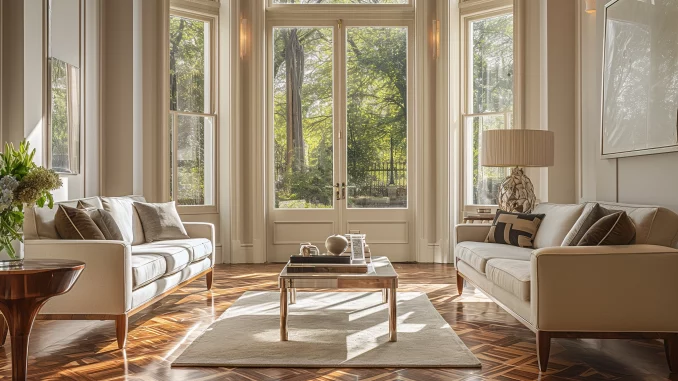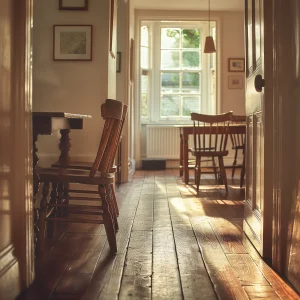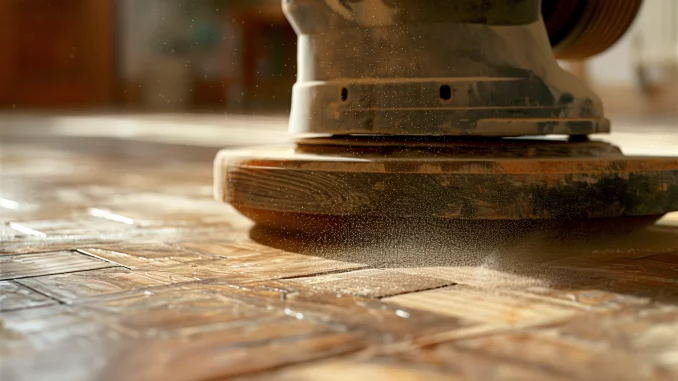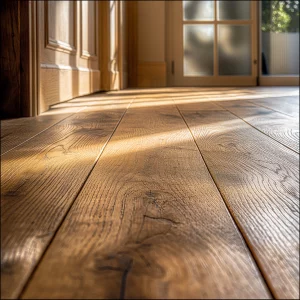
Transforming your space through the restoration of vintage floors is an art that blends practicality with aesthetics, offering a unique opportunity to rejuvenate the foundational element of your home. This journey not only enhances the charm and value of your property but does so in an affordable manner, making it an appealing endeavour for homeowners across the United Kingdom.
From quaint cottages in the countryside to elegant townhouses in London, the desire to preserve and enhance the character of our homes unites us. In embarking on this venture, we undertake a series of steps designed to meticulously assess, prepare, and execute the restoration process, ensuring that every floor tells its own story of revival.
Objective

The primary aim is to transform and rejuvenate vintage floors, thereby affordably enhancing the charm and value of homes. This process is not merely about repair but about breathing new life into every plank and tile, making them a testament to both their historical significance and dedication to preservation.
Assessment
The first step in this transformative journey is a thorough evaluation of the initial condition of the floors. This assessment phase involves identifying flaws such as loose boards, raised nails, and signs of wear and tear. It’s crucial that we approach this step with a keen eye, recognising that each imperfection tells a part of the floor’s story while also indicating the specific care it needs.
Preparation
With the assessment complete, we proceed to clear the space. This involves the removal of furniture and other items to ensure a clean and accessible working area. Sweeping and vacuuming are essential to remove any debris and dust that could interfere with the restoration process. It is in this phase that we lay the groundwork for a successful restoration, ensuring that the subsequent steps can be executed on a clean slate.
Choice
At this juncture, homeowners are faced with a pivotal decision: to embark on a DIY journey or to enlist the services of a professional. This decision hinges on several factors, including one’s skill level, the amount of time one can dedicate to the project, and budget constraints. It’s a choice that requires careful consideration, balancing the desire for personal involvement with the practicalities of the task at hand.
Repair
For those who choose the DIY route, the repair phase is both challenging and rewarding. Securing loose boards, filling gaps, and replacing broken pieces are tasks that require patience and precision. Removing old nails and ensuring that each board is properly aligned are additional steps that contribute to the overall consistency and longevity of the floor.
Cleaning
Using specialised cleaners is paramount in removing years of grime without damaging the wood. This step emphasises the importance of selecting products specifically designed for vintage floors, ensuring that the cleaning process is both effective and gentle.
Sanding

For floors that require more than just a superficial facelift, sanding is necessary to remove old finishes and smooth imperfections. This labour-intensive step can significantly transform the appearance of the floor, but it also introduces the challenge of dust minimisation, a consideration that is paramount for maintaining a clean and healthy home environment.
“Sanding old floors is very special. It’s like finding treasure under dirt. We use a special machine to carefully remove the old, dirty top layer and show the beautiful wood underneath. It’s important to do this gently so we keep the floor’s old charm but make it look new and strong again. This way, the floor’s history lives on and looks beautiful for many more years.”- Jim Goodall, GJP Floor Sanding.
Alternatives to Sanding
In instances where the wear is minimal, there are alternatives to the extensive sanding process. A thorough cleaning followed by scuff-sanding to roughen the surface for better adhesion and then vacuuming to remove any particles can precede the application of a new finish. This method offers a less invasive approach to refreshing the floor’s appearance.
Finishing
Choosing the appropriate finish is a critical step in the restoration process. Whether it’s oil-based, water-based polyurethane, lacquer, paint, or varnish, the selection must be made with consideration to the floor’s material, usage, and desired aesthetic. Applying the finish evenly and allowing it to dry thoroughly is crucial to achieving a professional-looking result.
Maintenance & Prevention
Post-restoration, regular cleaning and the use of protective pads under furniture rugs in high-traffic areas, climate control to prevent wood expansion, and immediate cleanup of spills are essential practices. These measures not only maintain the beauty of the floor but also prevent future damage, extending the life and appearance of the restored surface.
The considerations involved in vintage floor restoration are as much about the practical steps as they are about the deeper appreciation for the materials and craftsmanship of a bygone era. It requires us to factor in the labour intensity, the quality of materials, and the detail-oriented nature of the work. These considerations are crucial for achieving a balance between preserving the historic character of the floors and integrating them seamlessly into the functionality and aesthetics of modern living spaces.
Considerations
Labour intensity is a significant factor, especially for those embarking on a DIY restoration. The physical and time investment required can be substantial, and it’s essential to approach this with a realistic understanding of the scope and demands of the project. The quality of materials also plays a pivotal role in the restoration process. Choosing the right finishes, cleaners, and replacement wood, if necessary, can make a significant difference in both the outcome and the longevity of the restoration. The detail-oriented nature of the work demands patience and precision. Whether it’s matching the wood for repairs, ensuring the finish is applied evenly, or addressing the unique quirks of each floor, attention to detail is paramount.
Professional Insight

For severe damage or when working with exotic woods, seeking professional insight or services is advisable. Professionals bring a wealth of experience and specialised tools that can ensure optimal outcomes, especially in complex scenarios. They also offer solutions for dust minimisation, which can be a significant concern during sanding and other restoration processes. The benefits of professional involvement extend beyond just the technical aspects of restoration; they provide peace of mind that the project will be completed to a high standard, preserving the floor’s integrity and beauty.
Long-term Care
Emphasising preventative care and regular maintenance is crucial for extending the life and beauty of restored floors. Simple practices, such as regular cleaning with the appropriate products, using rugs and mats to protect high-traffic areas, and maintaining a stable indoor climate, can significantly mitigate wear and tear. Preventative care also involves being vigilant about moisture exposure and using furniture pads to avoid scratches, ensuring the floors remain in pristine condition for years to come.
Transformation Impact
The transformative effect of vintage floor restoration on space and the quality of life it brings cannot be overstated. Beyond the immediate visual enhancement, restored floors contribute to a sense of warmth, character, and history in a home. They tell stories of the past while seamlessly integrating them into the fabric of present-day living, creating a bridge between generations.
The satisfaction derived from successfully restoring a vintage floor, whether through personal effort or with professional help, adds a layer of personal connection to the space. It’s a testament to the homeowner’s commitment to preservation, sustainability, and the appreciation of craftsmanship.